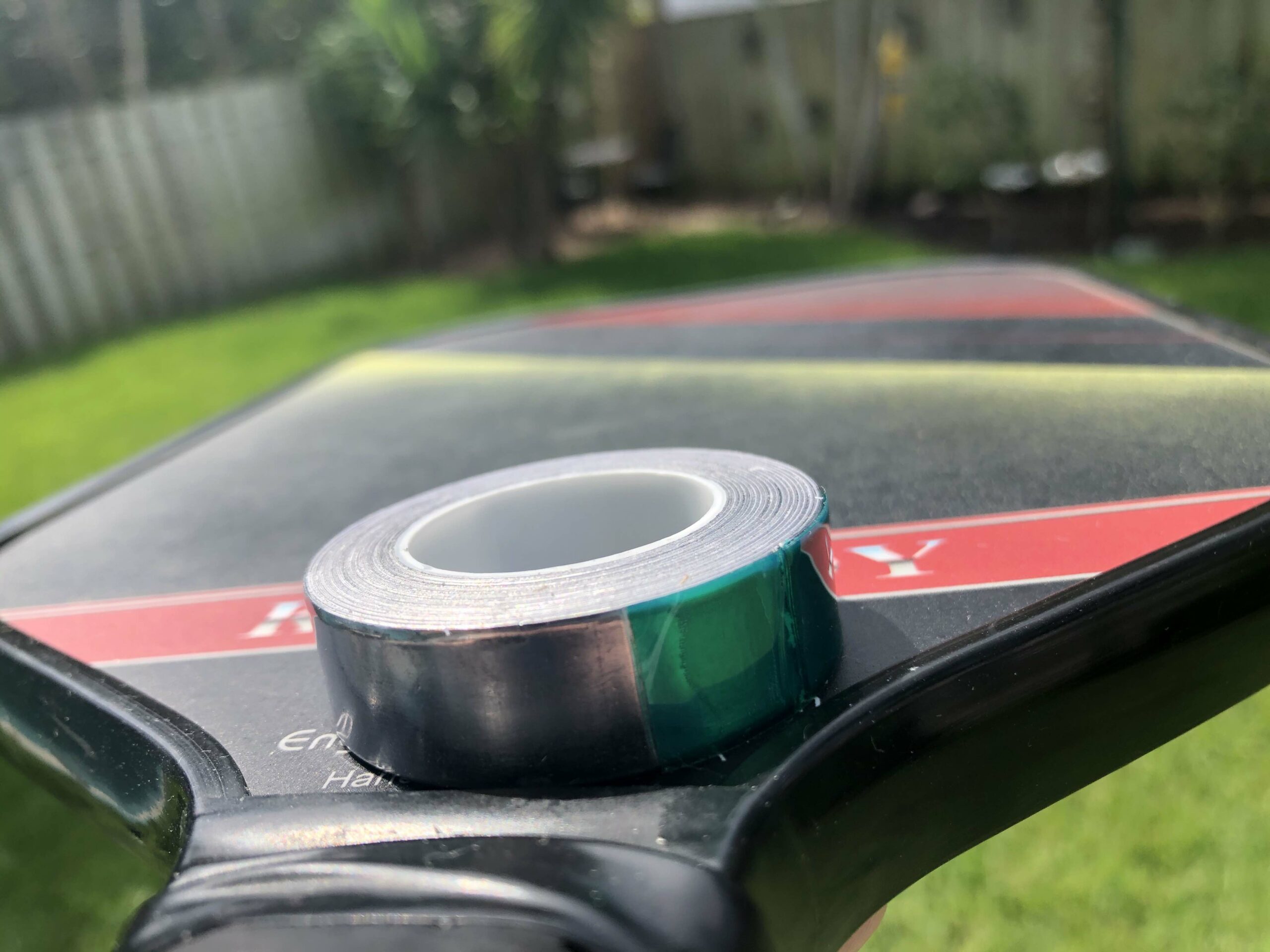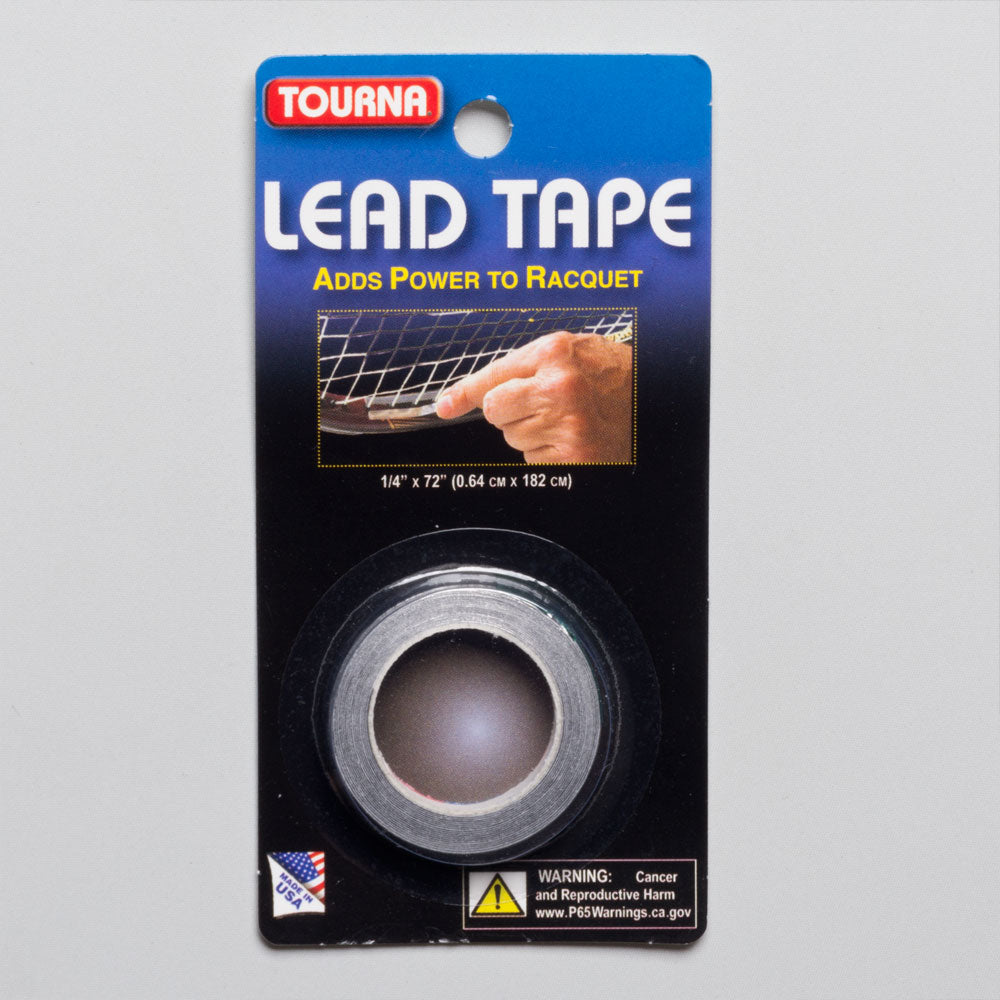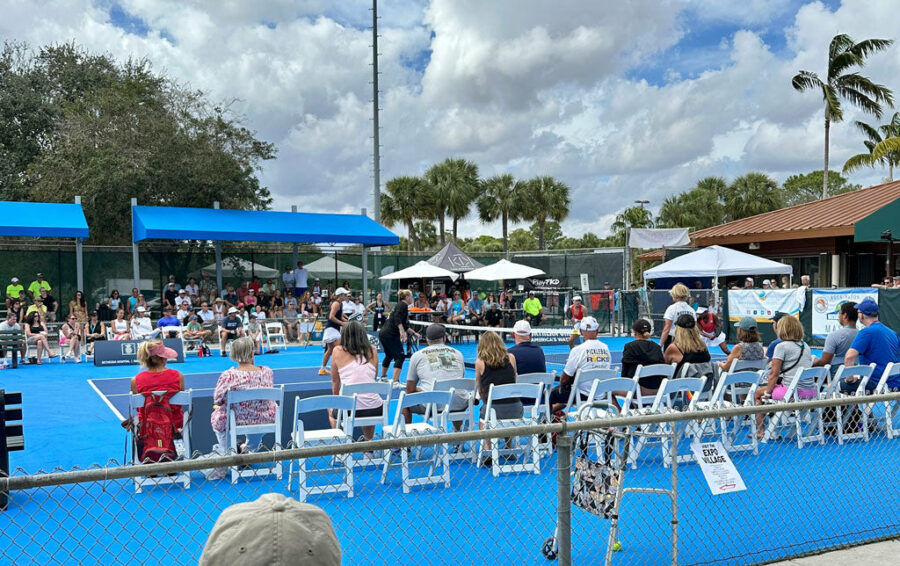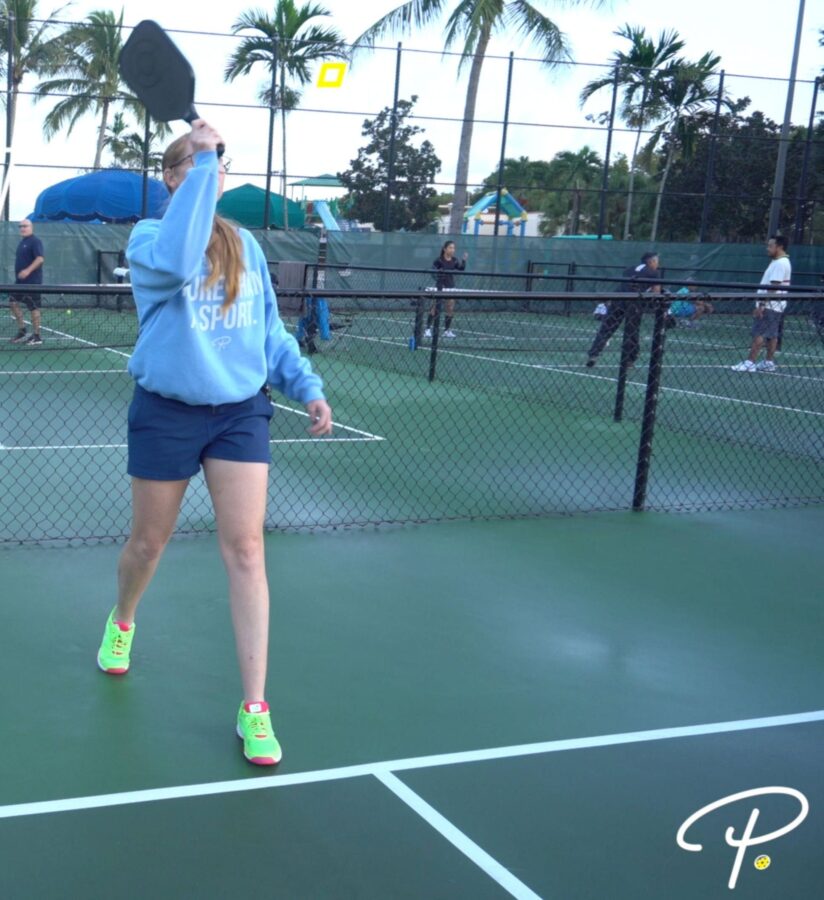Lead is a heavy metal that can be made into a tape – also known as lead tape. Lead tape can be used to add small increments of weight to your pickleball paddle, which will generally result in a heavier paddle swing, a larger “sweet spot” on your paddle, and a bit more power, or pop, when striking the pickleball. It is becoming increasingly common for pickleball players—especially professional pickleball players—to add lead tape to their pickleball paddles.
Should you follow this growing trend and add lead tape to your pickleball paddle? This pickleball blog will give you some information to help you answer that question. In particular, this pickleball blog will discuss:
- Whether lead tape is permitted by the rules of the sport of pickleball;
- Why pickleball players add lead tape to their pickleball paddles; and
- How to add lead tape to your pickleball paddle.
Pickleball Rules that Permit Lead Tape
The rules of pickleball permit pickleball players to add lead tape to their pickleball paddle. In particular, there are two pickleball rules to be aware of: (1) lead tape is a permitted alteration to commercially made pickleball paddles; and (2) there is no restriction on pickleball paddle weight.
As a result, not only can you add lead tape to your pickleball paddle, but you can add as much lead tape as you want to your pickleball paddle.
Why to Add Lead Tape to Your Pickleball Paddle
More and more pickleball players—especially competitive pickleball players, including professional pickleball players—are adding lead tape to their pickleball paddles. This is because lead tape may lead to:
- More Power – Adding lead tape makes your pickleball paddle heavier. This additional weight leads to more power in your shots on the pickleball court, including more power on drives, overheads, volleys, and other aggressive shots. The additional weight also may give you additional spin on your shots, as well as make defensive shots (i.e., “digging out” your opponents’ put away shots) easier and increase your ability to keep the pickleball in play longer.
- Larger Sweet Spot – Adding lead tape to your pickleball paddle makes the “sweet spot” on your pickleball paddle larger. This means that you will have more stability and more margin for error when striking the pickleball with your paddle. In particular, adding lead tape may make dinking and blocking easier, as you will have more margin for error with a larger sweet spot on your pickleball paddle.
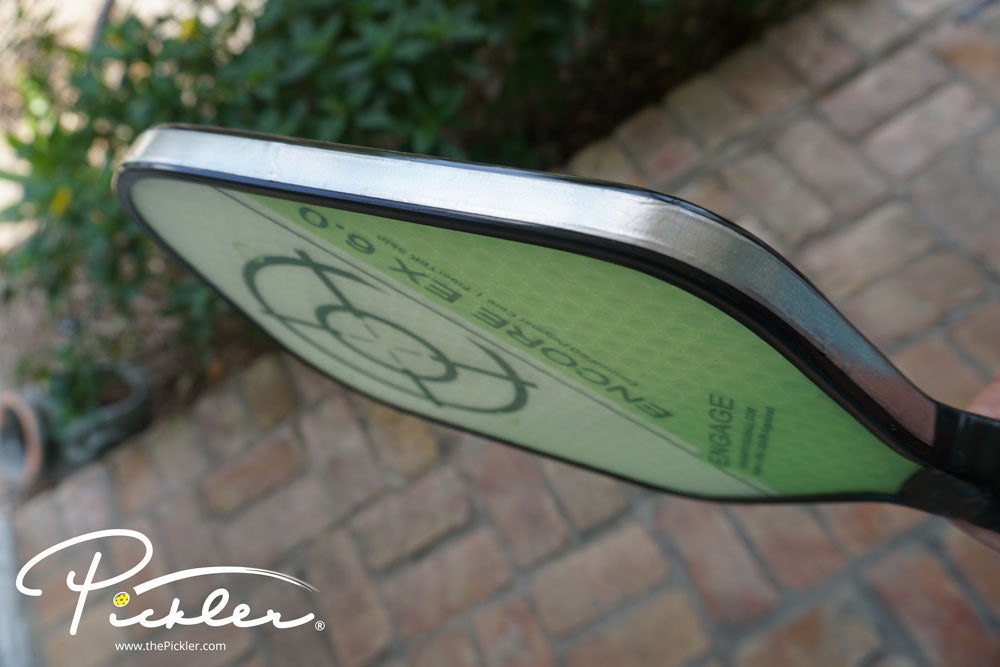
Given these potential benefits to your pickleball game, and the fact that lead tape is a nominal investment of time and money (less than $10), you may want to at least try adding lead tape to your pickleball paddle. If it turns out that you do not like the lead tape, you can easily remove the lead tape from your pickleball paddle.
However, adding lead tape to a pickleball paddle makes the pickleball paddle heavier. With that said, heavier pickleball paddles are not for everyone and can even lead to injuries, as heavier pickleball paddles may put unnecessary stress on your elbow, especially if you have poor mechanics and fundamentals on the pickleball court. If you have concern about elbow pain—in other words, “pickleball elbow” or tennis elbow—then adding lead tape to your pickleball paddle may not be for you.
How to Add Lead Tape to Your Pickleball Paddle
If you have decided to add lead tape to your pickleball paddle, then you now need to decide how much lead tape to add and where to add the lead tape on your pickleball paddle.
A four-inch strip of quarter-inch-wide lead tape weighs about 1 gram (or 0.035274 ounces). While this may seem like a nominal amount of weight, in comparison to the weight of the average pickleball paddle, a few strips of lead tape can add a noticeable difference. Further, where you place the strips of lead tape will affect the feel and balance of your pickleball paddle, as well as produce different effects:
- The Sides of the Pickleball Paddle (i.e., 3 and 9 o’clock) – Placing strips of lead tape on the sides of the pickleball paddle will produce a little extra power and pop, and will also enlarge the sweet spot of the paddle. This means that a player will have a bit larger margin for error (rather than having to hit the pickleball in the center of the pickleball paddle).
- The Top of the Pickleball Paddle (i.e., 12 o’clock) – Placing strips of lead tape on the top of the pickleball paddle will produce more power and pop. However, this will make the head of the pickleball paddle feel heavier and have a bit more whip, which is not desirable for all pickleball players. For instance, if the head of the pickleball paddle lags behind a pickleball player when swinging, the pickleball paddle is likely too heavy for him or her.
- The “In-Between” (i.e., 2 and 10 o’clock) – Placing strips of lead tape in the 2 and 10 o’clock positions (like driving a car) will give you a bit of a broader sweet spot and a bit more power – in other words, the in-between of the benefits of placing the lead tape on the sides of the pickleball paddle versus the top of the pickleball paddle.
- The Throat (AKA Lower Sides) of the Pickleball Paddle (i.e., 4 and 8 o’clock) – Placing strips of lead tape on the throat of the pickleball paddle (i.e., the lower sides of the paddle near the handle) will add some weight to your paddle without making the paddle feel too “hefty,” as the weight will be closer to the grip of the paddle. The pickleball paddle will not feel too heavy and will not slow your paddle speed down as much as if the weight was placed at the top of your paddle.
- All Around the Pickleball Paddle (i.e., from just above the handle, all the way around the edge of the pickleball paddle, to the other side that is just above the handle) – To add at least a full ounce of weight to your pickleball paddle, wrap the lead tape around the entire edge of the paddle. This will add a noticeable amount of weight to your pickleball paddle, which will generally keep the balance of your pickleball paddle similar as the balance without any lead tape (but with slightly more weight on the head of the pickleball paddle, as opposed to the handle).
Personal Experience of Trying Lead Tape on a Pickleball Paddle
Speaking from personal experience, I added lead tape all around my pickleball paddle (which took my pickleball paddle from 8.1 ounces to 9.2 ounces), as I liked the idea of keeping the same balance as I was used to, as well as having a compromise of both power and additional sweet spot. The additional power is noticeable immediately—not only in the power behind the pickleball on my shots, but even in the sound of my pickleball paddle when hitting the pickleball. With that said, what I like the most about the lead tape is that my defensive shots (i.e., my shots to return my opponents’ offensive shots) are easier. However, after some trial and error, I felt that the paddle was now too heavy. So, I removed the added lead tape only from the top of the paddle, and I kept the lead tape down the sides and throat of the pickleball paddle. This was a good balance for me of added power, without making the paddle feel too heavy or slowing your hands down.
If you are not ready to wrap your pickleball paddle in lead tape, then add a little at a time (to note, to add additional weight gradually, you can add the lead tape to additional areas on your pickleball paddle, or you can layer the lead tape on top of itself). Also, consider adding lead tape to the sides or throat of your pickleball paddle, which will help add power and broaden the sweet spot without making the paddle feel too heavy or slowing your hands down.
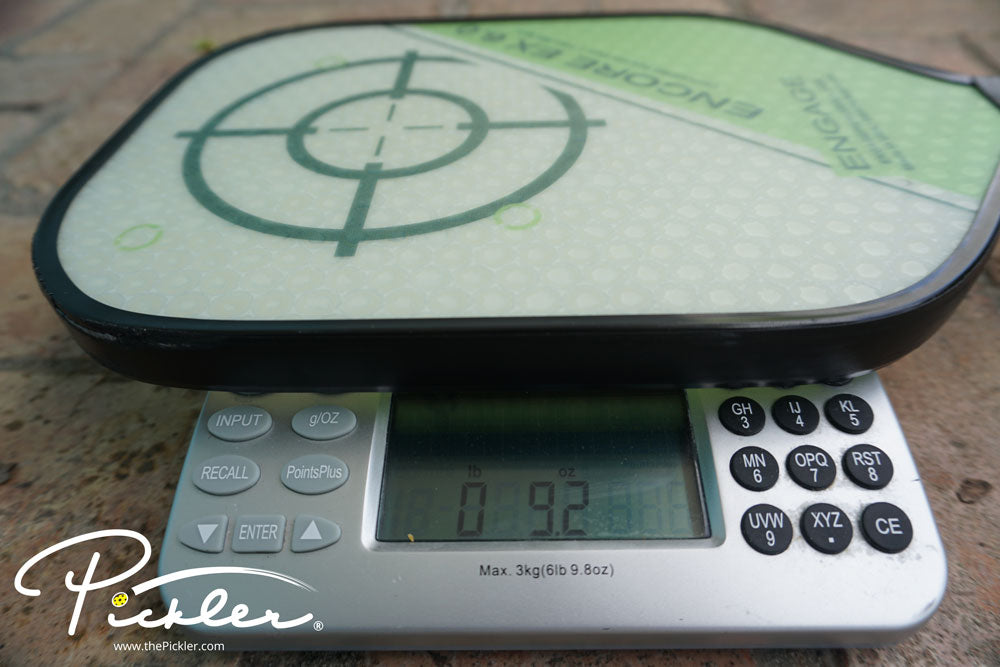
Handle the Lead Tape with Care When Adding to Your Pickleball Paddle
Whether or not to add lead tape to a pickleball paddle, as well as placement and how much to add, is a personal preference for each pickleball player. It may also take a bit of trial-and-error to find the right combination of placement and amount that works best for you. However, if you decide to use lead tape, remember to be careful, as there is a slight risk that lead particles could be released when handling, applying, and removing lead tape. Consider covering the lead tape with edge guard tape (or electrical tape) after application, and always handle, apply, and remove the lead tape away from your face. Also, consider using gloves to handle, apply, and remove the lead tape, as well as wash your hands immediately after.
Will You Add Lead Tape to Your Pickleball Paddle?
Have you considered adding lead tape to your pickleball paddle? Test it out and see it makes a difference in your game – and remember to be careful when handling!
Updated as of July 30, 2022

